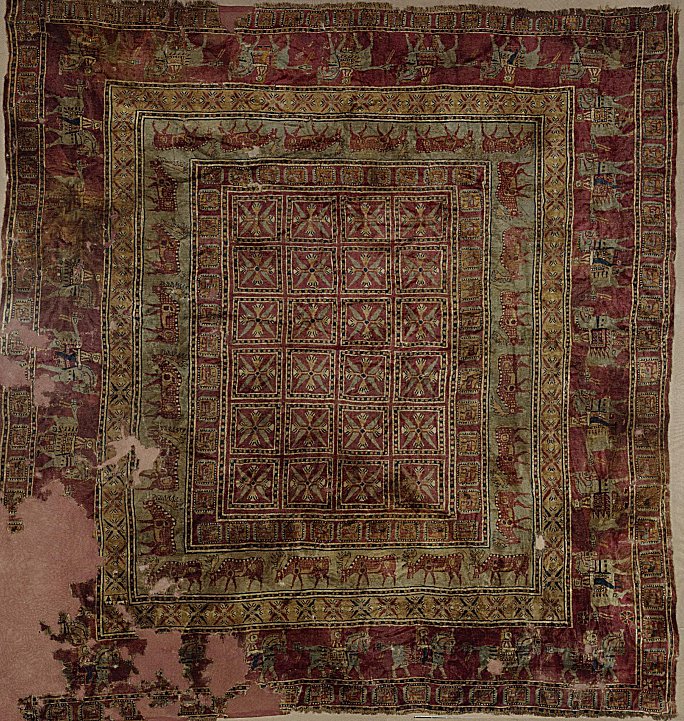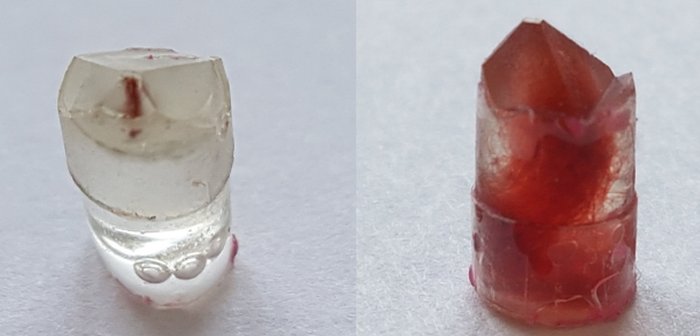Conny Waters – AncientPages.com – The world’s oldest example of a knotted-pile carpet and is the one kept at the State Hermitage Museum in St. Petersburg, Russia.
The so-called Pazyryk Carpet, which was made out of new wool at around 400 BC, is one of the most fascinating examples of central Asian craftsmanship from the Iron Age.
 Pazyryk Carpet. Image source
Pazyryk Carpet. Image source
Ever since the carpet was discovered in 1947 by Russian archaeologists in a kurgan tomb in the Altai mountains, experts in traditional dyeing techniques have been puzzled by the vivid red, yellow and blue colors of the carpet, which lay buried in extreme conditions for almost 2,500 years.
Now, researchers reveal some of its secrets. They decided to image the distribution of pigments across the cross-section of individual fibers of wool using high-resolution X-ray fluorescence microscopy (μ-XRF). With three to five micrometers, the microscope provides sufficient spatial resolution combined with high sensitivity for characteristic chemical elements.
In their study, Prof. Dr. Karl Meßlinger from the Insтιтute of Physiology and Pathophysiology at FAU, and X-ray microscopy experts Dr. Andreas Späth and Prof. Dr. Rainer Fink from the Chair of Physical Chemistry II at FAU, focused mainly on red wool fibers, as the pigment Turkey red has been in use almost exclusively for centuries in Central Asia and in the Far East to create a characteristic shade of red.
 Prepared for analysis using an x-ray fluorescence microscope: Fibres from the historical Pazyryk carpet embedded in epoxy resin (left). On the right, standard samples that the researchers fermented and dyed themselves as a comparison. Credit: FAU/Dr. Andreas Späth
Prepared for analysis using an x-ray fluorescence microscope: Fibres from the historical Pazyryk carpet embedded in epoxy resin (left). On the right, standard samples that the researchers fermented and dyed themselves as a comparison. Credit: FAU/Dr. Andreas Späth
Turkey red is a metal-organic complex made of alizarin, which is derived from the roots of the rose madder, and aluminum.
“μ-XRF imaging shows the characteristic distribution of the aluminum along the cross-section of fermented wool fibers,” explains Dr. Andreas Späth.
“We found the same pattern in fibers from the Pazyryk carpet.”
This is by far the earliest example of the fermentation technique and provides an insight into the already highly-developed techniques used by textile craftsmen and women in the Iron Age. The results also show the high potential of X-ray microscopy for analyzing samples of textiles from archaeological sites. Up to now, research in this field has used scanning electron microscopy (SEM).
Written by Conny Waters – AncientPages.com Staff Writer





